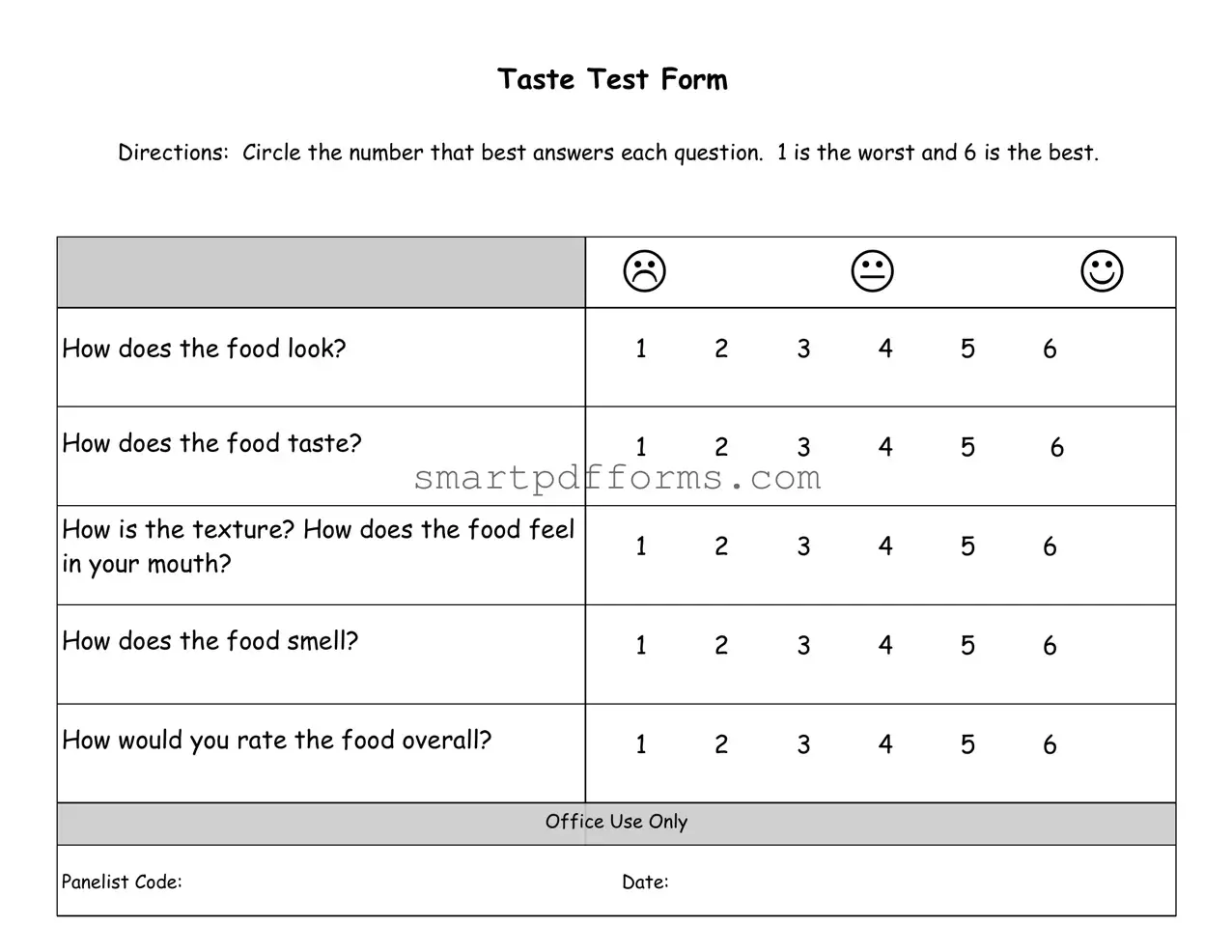Blank Taste Test PDF Template
The Taste Test Form is a structured tool designed to capture subjective feedback on various aspects of food, such as its appearance, taste, texture, and aroma, using a six-point scale. Participants are asked to circle a number from 1 (the worst) to 6 (the best) to rate each attribute of the food they are sampling. To participate and share your opinions on the latest food products, be sure to fill out the form by clicking the button below.
Make This Document Now
